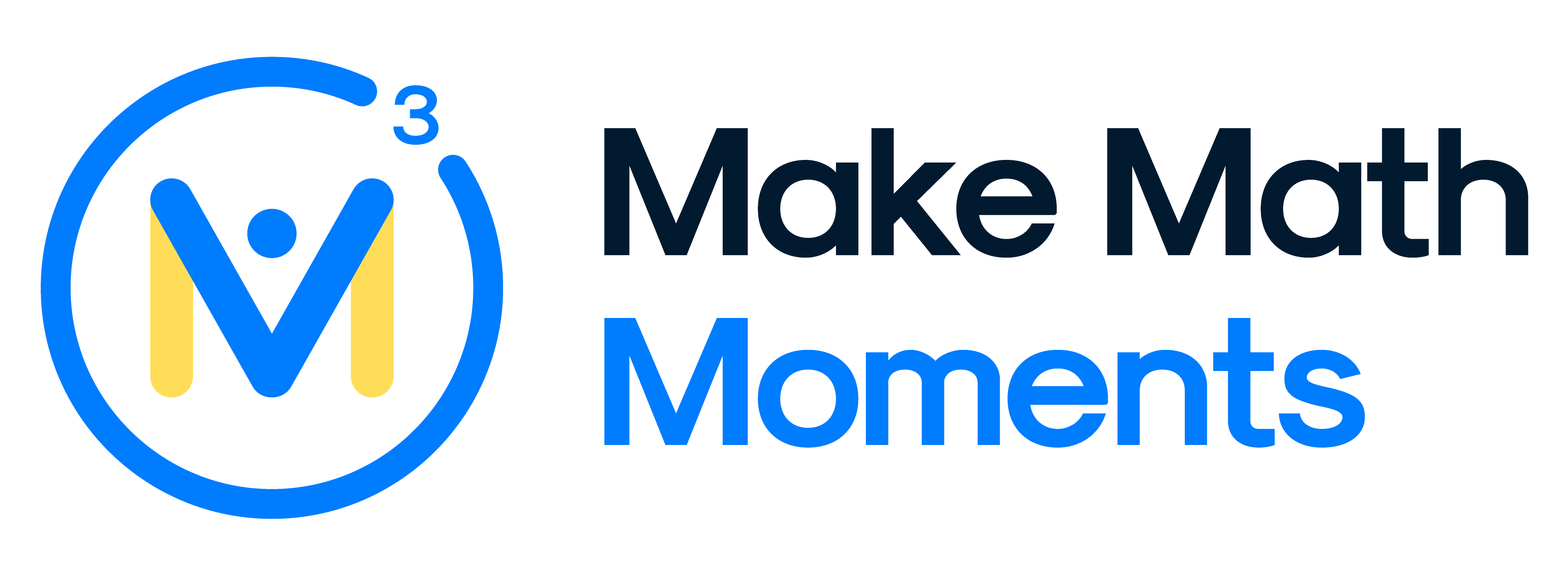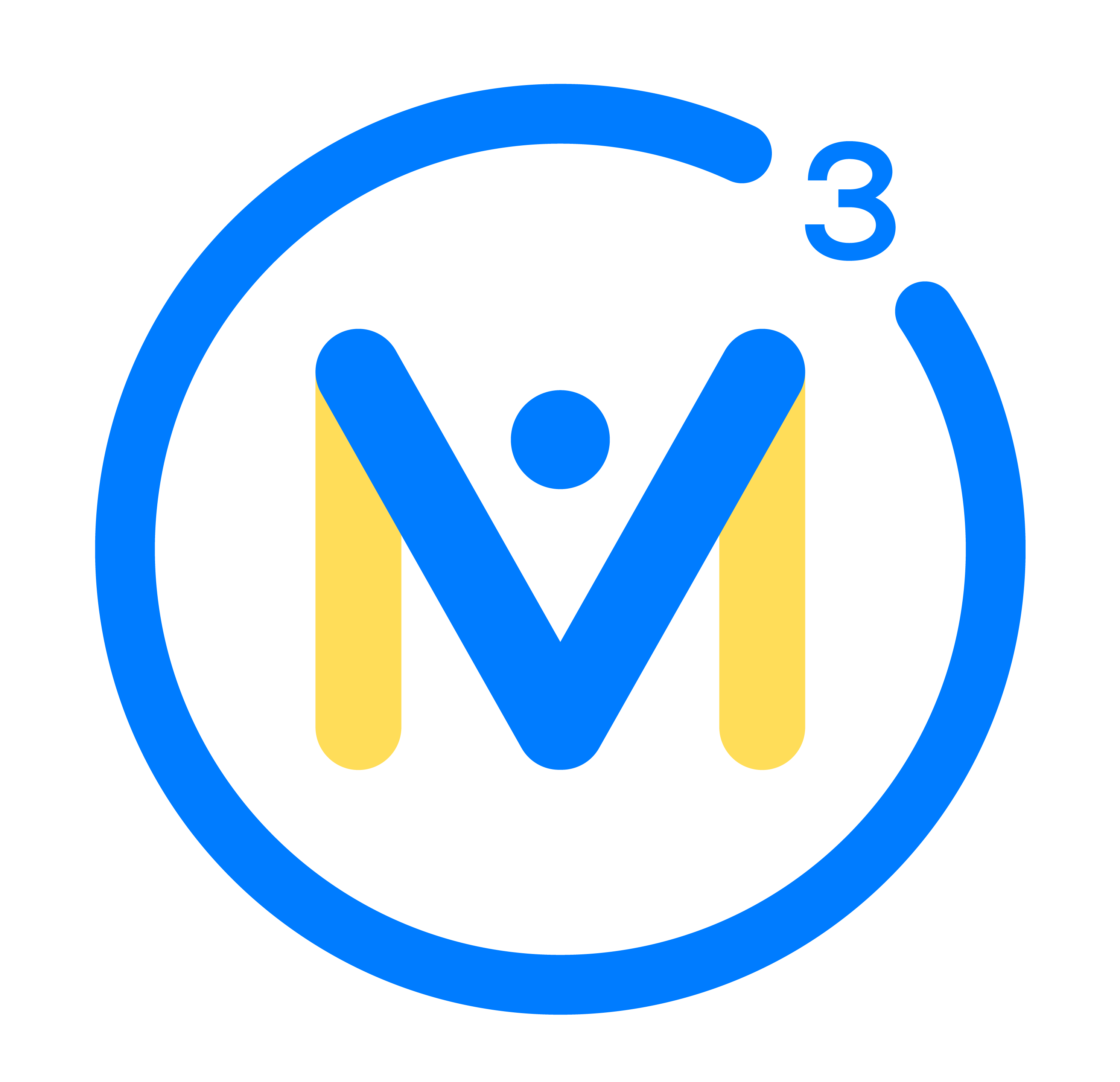LAUNDRY DAY [DAY 4]
ADDITION STRATEGY: PLACE VALUE TO ALGORITHM
Explore efficient strategies to add values within 50
Intentionality
Math Talk
Visual Math Talk Prompt #1
Visual Math Talk Prompt #2
Visual Math Talk Prompt #3
Visual Math Talk Prompt #4
Visual Math Talk Prompt #5
Visual Math Talk Prompt #6
Purposeful Practice
Resources & Downloads
Educator Discussion Area
Intentionality & Unit Overview

Length of Unit: 5 Days
Access each lesson from this unit using the navigation links below
Students will solve problems that require regrouping/trading from the tens column to solve.
Intentionality…
The purpose of the Day 4 activities is to reinforce key concepts from Day 3. Students will engage in math prompts and will have an opportunity to complete purposeful practice. The math talk and purposeful practice serve to develop a deeper understanding of the following big ideas.
Students will solve a subtraction question using the addition strategy of place value leading to a discussion about the standard algorithm.
Some of the big ideas that may emerge today include:
- Understanding hierarchical inclusion allows for flexible composing and decomposing of numbers
- Numbers can be decomposed by separating a whole into two or more parts
- Addition names the whole in terms of the parts
- Different addition situations will elicit different strategies
- Number relationships provide the foundation for strategies to help students remember basic facts
- Models can be used to connect concrete to abstract
Before starting this unit, students should be familiar with:
- Understanding of place value
- Single Digit Addition Strategies ( e.g., 8 + 7 = 15, 6 + 3 = 9, etc)
- Adding groups of ten (e.g., 30 + 20 = 50, etc)
Math Talk
To practice using a place value strategy/standard algorithm to add, have your students work through these problems one at a time. As you present each problem, provide students with some quiet, individual think time during which they can solve the problem and show their thinking on a dry erase board, paper, etc. Then have students share their thinking either in pairs or with the whole group. As you facilitate these conversations, notice how students are recording their thinking and use purposeful language to develop an understanding of the exchange/regroup process. Watch how students record their thinking as the questions change from base ten manipulatives to written ones. Are they trading into the tens column? Or do they write the full number in the ones column? Do they start adding from the left or from the right?
Writing the full number is common as students explore the standard algorithm. As shown in the picture below, students may not realize yet that they can only write one number in each place column. Additional use of the base ten manipulatives may be necessary to demonstrate why a trade needs to occur. Also, if students are making an estimate about the sum, they should realize that 514 is way too big of a sum.
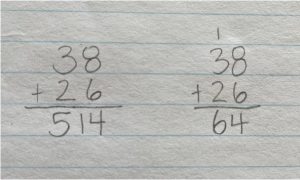
The numbers in the problems are specifically chosen to elicit the place value strategy over an alternative strategy. Students are always encouraged to be flexible with the strategies they use, so an alternate strategy is not to be discouraged. Instead, honour that strategy with a student but choose students to share who are using the place value algorithm.
Manipulatives may be necessary for students to “see” how the trade process works. For this purpose, base ten blocks are used in the first three prompts but then replaced with number expressions. The final prompt uses numbers that are above 50 to allow students to add bigger numbers using the same process.
String 1:
33 + 12
String 2:
46 + 15
String 3:
43 + 19
String 4:
Login/Join to access the entire Visual Prompt, downloadable slide decks and printable handouts for this lesson and all problem based units.
String 5:
Login/Join to access the entire Visual Prompt, downloadable slide decks and printable handouts for this lesson and all problem based units.
String 6:
Login/Join to access the entire Visual Prompt, downloadable slide decks and printable handouts for this lesson and all problem based units.
Visual Math Talk Prompt #1
The first prompt does not involve regrouping/trading. This is to warm students up to addition. Watch if students are solving this question from left to right or right to left. Do they add the tens first or the ones first?
Facilitator Note: The base ten blocks are used in these prompts as a visual to demonstrate the amount added. Consider providing base ten blocks to some students or demonstrating as a group.
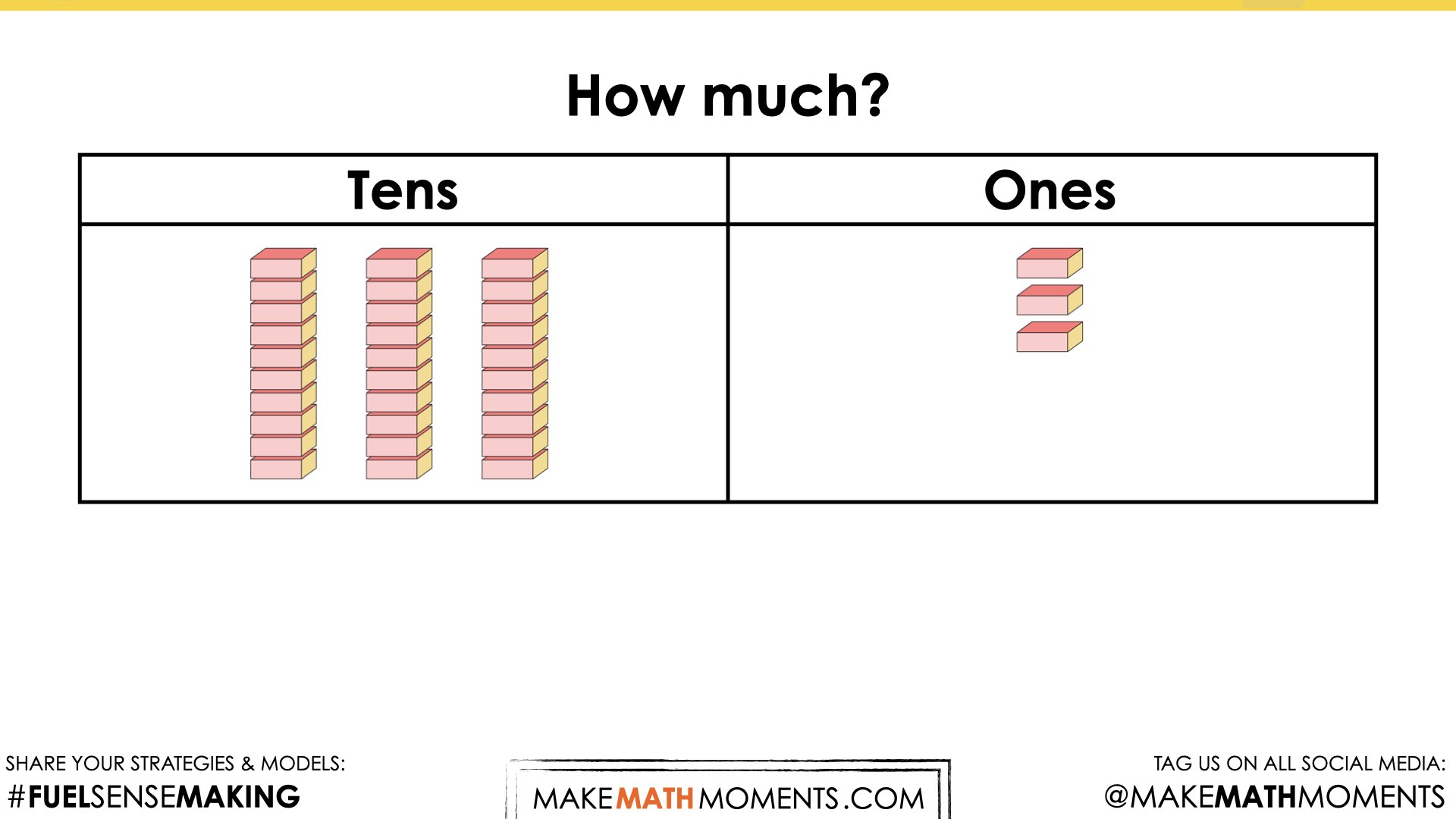
Students use knowledge of tens and ones to “quickly” recognize 31.
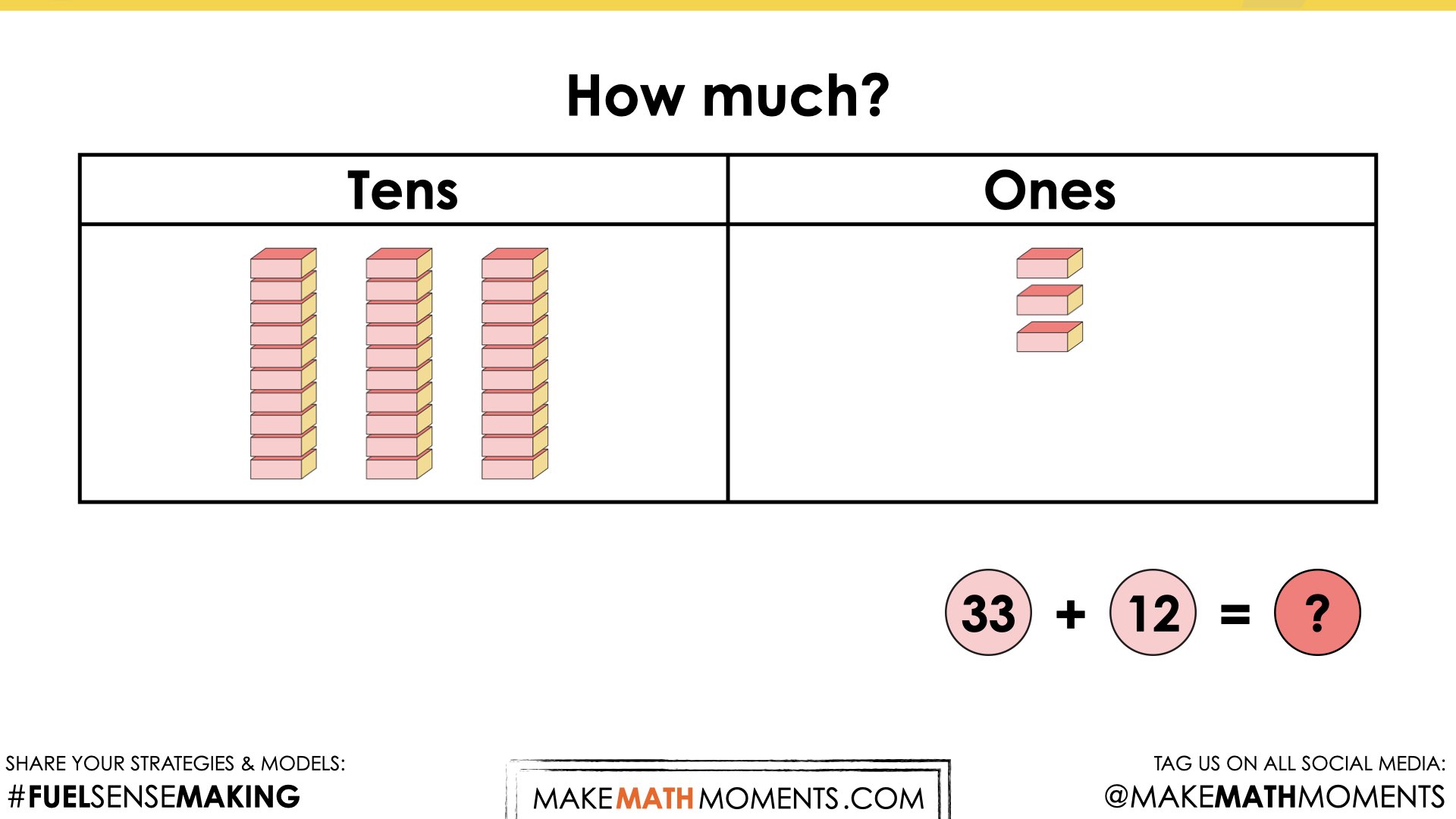
The addition sentence is displayed. Allow students some time to solve the question. Providing base ten blocks may be an accommodation for some students.
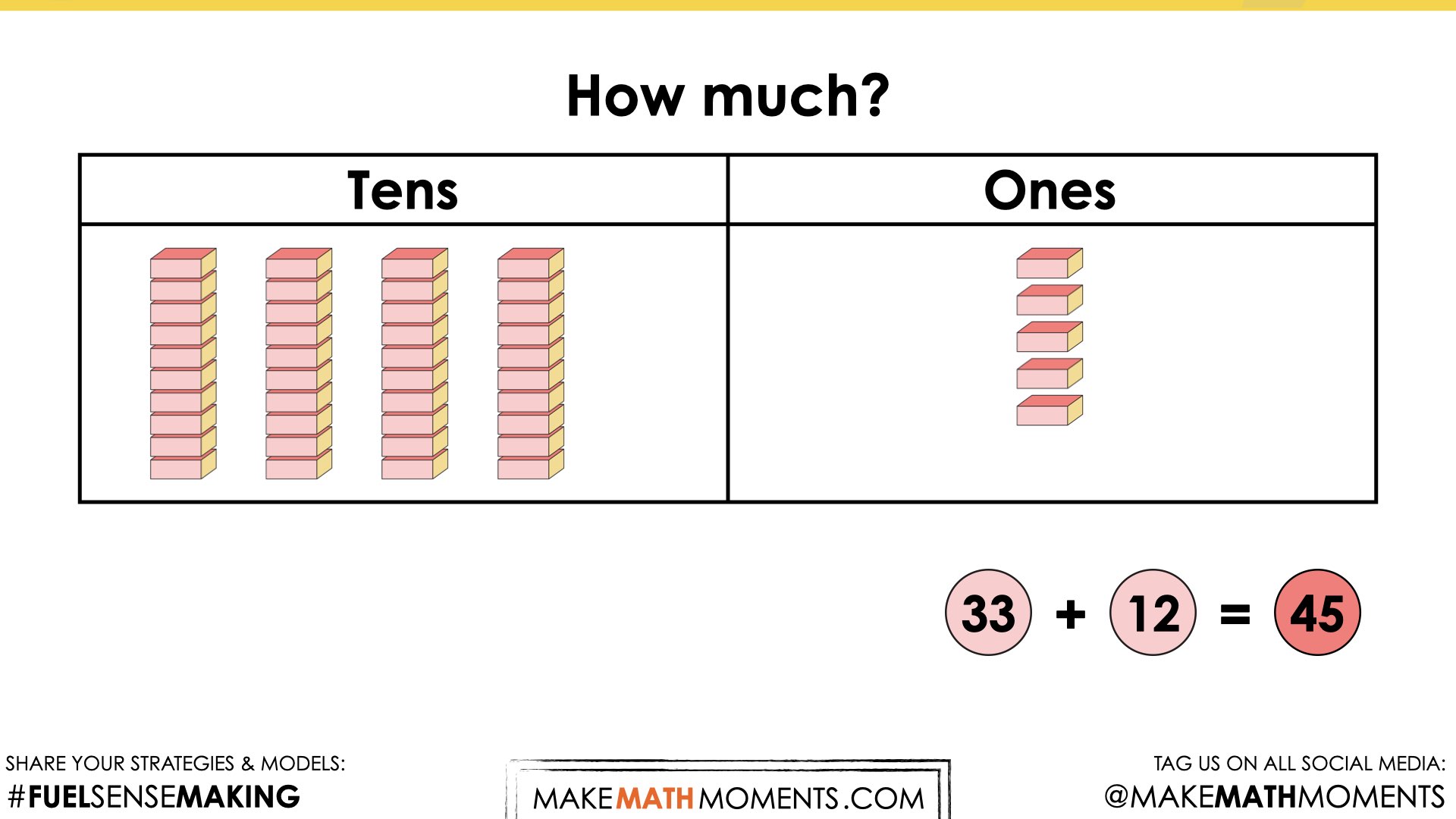
Visual Math Talk Prompt #2
This prompt will involve regrouping/trading to occur. The base tens are used in the prompt to support the discussion of the trading. Encourage students to say that they traded ten ones to the tens place value column rather than “carrying the one”. This is why 11 turns into 1.
The reveal video demonstrates the trading process, but if necessary allow students to practice with base ten blocks in partners to see it for themselves.
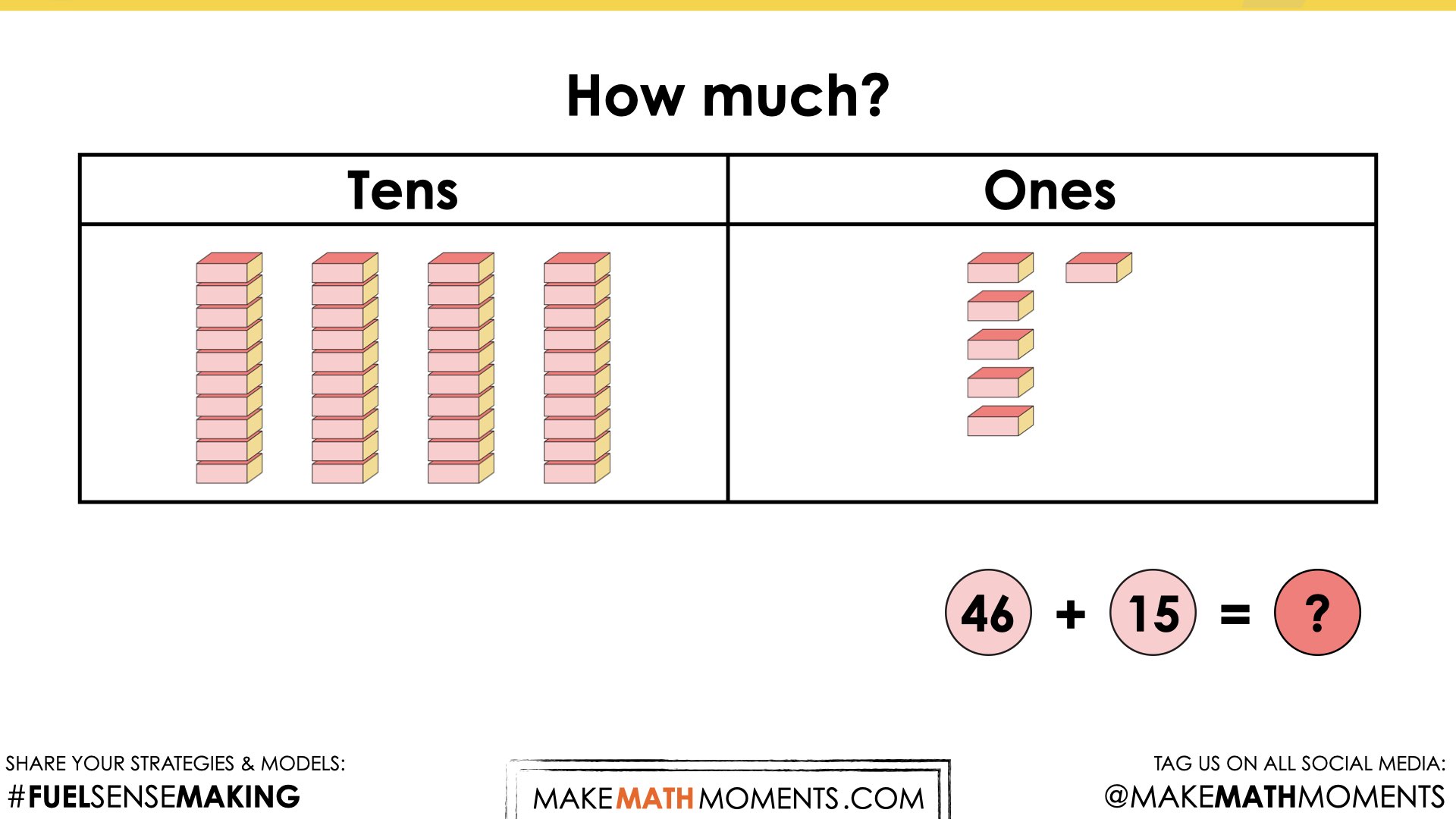
As 15 is added to 46, there is another 10 created. This visual can be used to demonstrate where the 10 goes when adding 6 and 5 before using the standard algorithm.
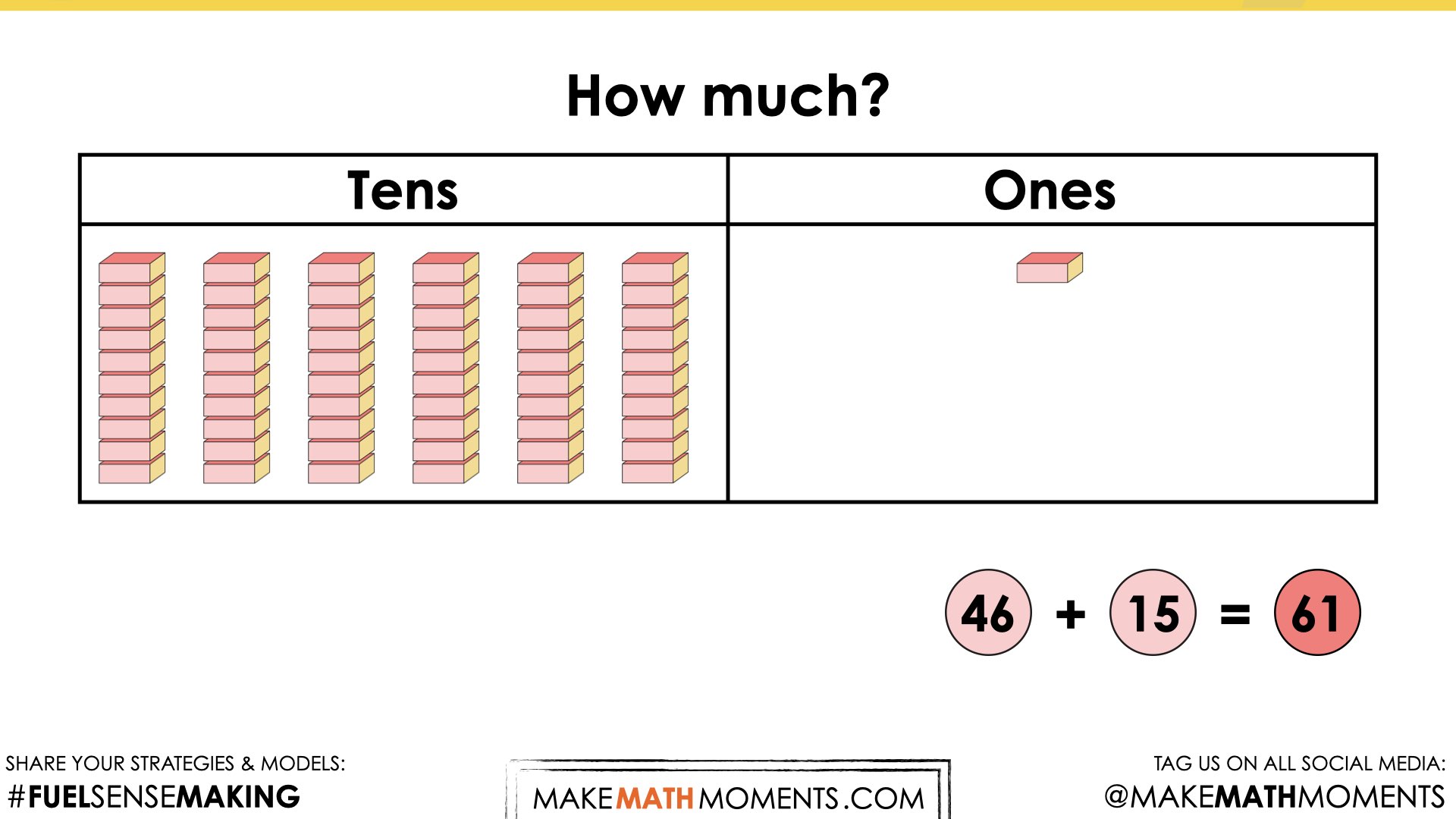
Visual Math Talk Prompt #3
Similar to the second prompt, this prompt requires a trade to occur. This is the last prompt to use base ten manipulatives as a visual. Continue to generate discussion using the appropriate language to match the process.
“We are trading ten ones to make another ten in the tens place value column”
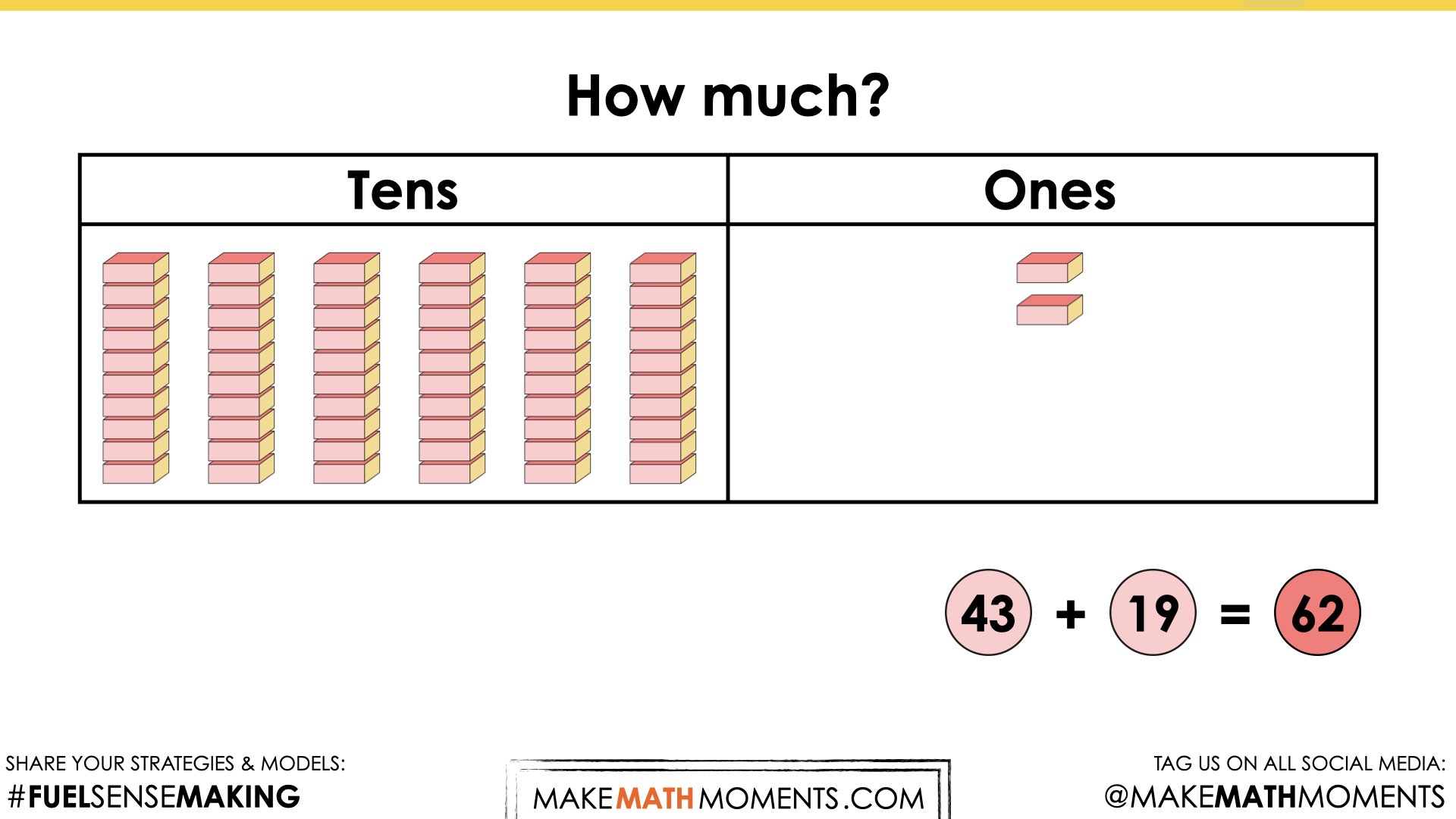
Visual Math Talk Prompt #4
Login/Join to access the entire Visual Prompt, downloadable slide decks and printable handouts for this lesson and all problem based units.
Visual Math Talk Prompt #5
Login/Join to access the entire Visual Prompt, downloadable slide decks and printable handouts for this lesson and all problem based units.
Visual Math Talk Prompt #6
Login/Join to access the entire Visual Prompt, downloadable slide decks and printable handouts for this lesson and all problem based units.
Purposeful Practice
Small Group Game
Login/Join to access the entire Visual Prompt, downloadable slide decks and printable handouts for this lesson and all problem based units.
Small Group Assessment Opportunity
Login/Join to access the entire Visual Prompt, downloadable slide decks and printable handouts for this lesson and all problem based units.
Resources & Downloads
Login/Join to access the entire Visual Prompt, downloadable slide decks and printable handouts for this lesson and all problem based units.
Printable Lesson Plan PDF
Videos, Images & Media Files
Apple Keynote Presentation
Powerpoint Presentation
Printable Consolidation Prompts
Educator Discussion Area
Login/Join to access the entire Visual Prompt, downloadable slide decks and printable handouts for this lesson and all problem based units.
Explore Our 60+ Problem Based Units
This Make Math Moments Lesson was designed to spark curiosity for a multi-day unit of study with built in purposeful practice, number talks and extensions to elicit and emerge strategies and mathematical models.
Dig into our other units of study and view by concept continuum, grade or topic!
